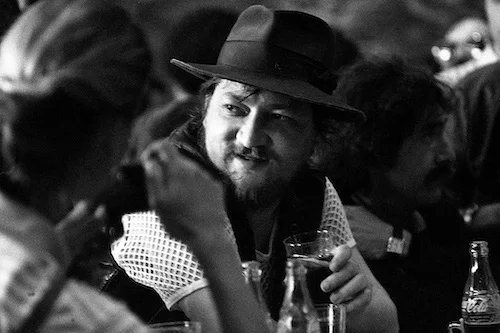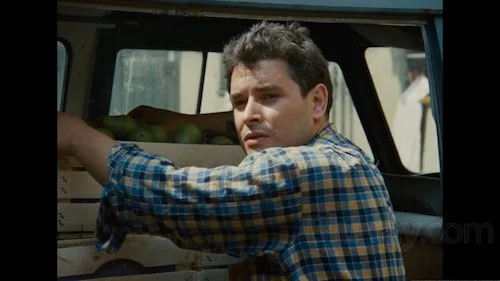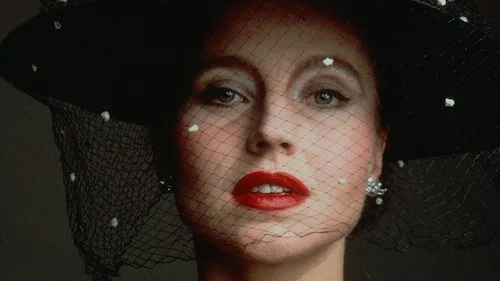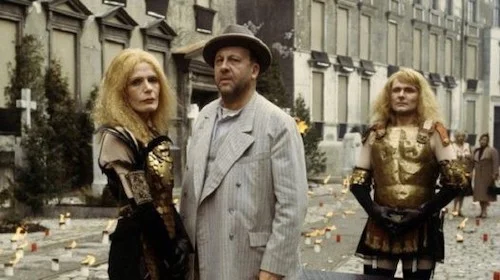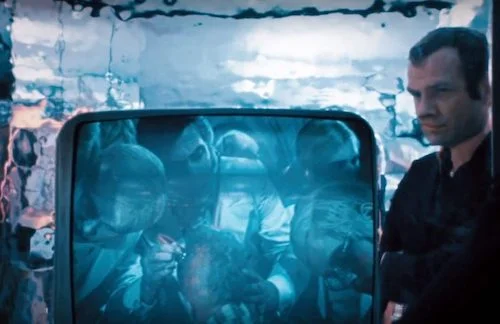Rainer Werner Fassbinder: Five Films for Newcomers
To celebrate what would have been Rainer Werner’s seventy fourth birthday, here’s a reminder that it is never too late to check out the works of one of cinema’s greatest filmmakers. What made Fassbinder’s films resonate so deeply? Well, there is a certain level of self reflection in many of his works, mostly from a personally dark, candid place. It’s no secret that Fassbinder led a highly problematic life, including the many devastating turmoils he had to overcome, as well as the toxic methods he used to try and overcome them (vicious abuse, and substance addictions). A lot of these curses translated into his works: the damned that cannot face their demons, or those that succumb to the pressures of society and remain a tortured, hateful shell of their previous selves.
Calling Fassbinder prolific was an understatement. He churned out many works during his short filmmaking tenure, but he also made a number of considerable epics during this time. If you are new to the works of Rainer Werner Fassbinder, let us celebrate his filmography by getting you started the right way. Here are five films for newcomers to Rainer Werner Fassbinder.
While the ranking is in ascending order of his best works, these are also presented in this manner to leave some of his more challenging works for after the first two films.
5. The Merchant of Four Seasons
This was a turning point of Fassbinder. A film of his finally shook audiences at the level he anticipated. What did he have to do to get here? Reveal his soul, of course. In a way that Smiles of a Summer Night saved Ingmar Bergman, The Merchant of Four Seasons made Fassbinder’s career (at that point) and made the world aware of this auteur that they had been missing out on. The film presents many of Fassbinder’s insecurities, including a workingman that is neglected by his surroundings. It is the shortest film on this list (by far), but it’s also one of the more stripped down efforts you will find. It truly is a lesson on how Fassbinder viewed himself at that time, untainted by the layers of complexities he would be known for shortly afterwards.
4. The Marriage of Maria Braun
Something I love about this film, is how it really is a story any filmmaker could tackle, and yet no one would create the same spine tingling result Fassbinder had. Part of the BRD Trilogy (and arguably the strongest film within it, despite this trilogy being one of cinema’s greatest), The Marriage of Maria Braun takes place during the aftermaths of World War II. A quick marriage occurs, and the newlyweds are split as quickly as they were paired together. The wife (Maria Braun) tries to move forward, yet her soldier husband (Hermann Braun) returns at specific checkpoints. This is a brilliant metaphor for how war lingers in the minds of those back home, as well as how former lovers will stay in the thoughts of the lonely. It can even be simplified: this is a wife wanting to move forwards whilst clinging to her lover that is currently fighting. Toss in a jaw dropping final scene that perfectly utilizes sound mixing, and you’ve got one powerful statement.
3. Berlin Alexanderplatz
Before we continue, I would like to warn you that this is a fifteen and a half hour long film cut up into a televised miniseries. Now that that daunting fact is out of the way, let me explain why Berlin Alexanderplatz is one of cinema’s championing slow burns. Franz Biberkopf is released back onto the streets of Berlin a supposed changed man; he was in prison for killing his girlfriend in a fit of rage. Without saying too much, thirteen of the hours here are devoted to Biberkopf trying his best to remain moral, yet he is still haunted by his crimes. Reality gets twisted with dreams, and dreams get twisted with his memories. He slips, and his inner monster wins some battles he has with himself. We finally reach the “epilogue”, and I do not even know where to begin. Maybe because it took thirteen hours to get there, but this two hour finale has frightened and scarred me more than most horror films ever had. Rules are broken. Nightmares come to life. This is, perhaps, the greatest depiction of hell ever captured on film.
2. Ali: Fear Eats the Soul
This is a great starting point for many people, because it is short, and painfully direct. There aren’t many twists and turns, here. Only hard hitting circumstances. An older widow falls in love with a Moroccan immigrant in the early ‘70s, after the Munich Massacre. Civilians are on edge, yet they encourage their own deeply rooted racist tendencies to win their moral battles. This is the start of something beautiful, turn into pure devastation. They had the world in the palm of their hands, and the world slowly grows bigger and bigger to the point of isolation. There is very little contact, and whatever brushes with others that occur are usually confrontational. Ali quotes the titular phrase (“fear eats the soul”), perhaps referring to how others allow a clouding of judgment to overrule every decision. What we don’t anticipate is how it also kills the souls of those that fell in love in the first place.
1. World on a Wire
This four hour, two part televised event was shown once on television in Germany, and vanished for decades. It was often discussed, but rarely witnessed. In the age of the internet, those bootlegged copies that were often rumoured finally came to light. In the age of film preservation, releases like the Criterion Collection’s put life back into this urban legend. After all of these years, was World on a Wire even worth it? It was beyond worth it. Debatably the greatest science fiction film of all time, World on a Wire was gifted by its curse. It was released at a time where film production could achieve a stylish look that embodied a future and a past; it was smack-bang in the middle of both visions in film history. As it disappeared, it left very few blueprints for other filmmakers to relate to. Its existence was known, so it still left an imprint on other films (notably cyber-existential films like The Matrix). Once it finally was rereleased for the world to witness, it was like the allegory of the cave: any attempts at depicting what few saw were futile, because nothing came remotely close.
What makes World on a Wire so monumental? Well, its story of digitally fabricated worlds is one that gets amalgamated into a noir environment. So, we get the coldness of strangers from films noir, and the inkling that people aren’t truly real in this frigid landscape. The cinematography is exceptional, to the point that pausing the film at any point may be a new masterpiece with each pause. The first two hours are a clue-chasing set up. The last two hours are the frenzy that comes after the story-cementing twist. Fassbinder could tell a mean narrative, but he could also understand how to allow hysterias to last for as long as he wanted. World on a Wire is a crowning achievement in cinema that we thankfully never lost. It’s the kind of film you may feel will become a favourite of yours ten minutes in; you may even smile maniacally knowing that you still have nearly two hundred more minutes to go.
Andreas Babiolakis has a Masters degree in Film and Photography Preservation and Collections management from Ryerson University, as well as a Bachelors degree in Cinema Studies from York University. His favourite times of year are the Criterion Collection flash sales and the annual Toronto International Film Festival.

